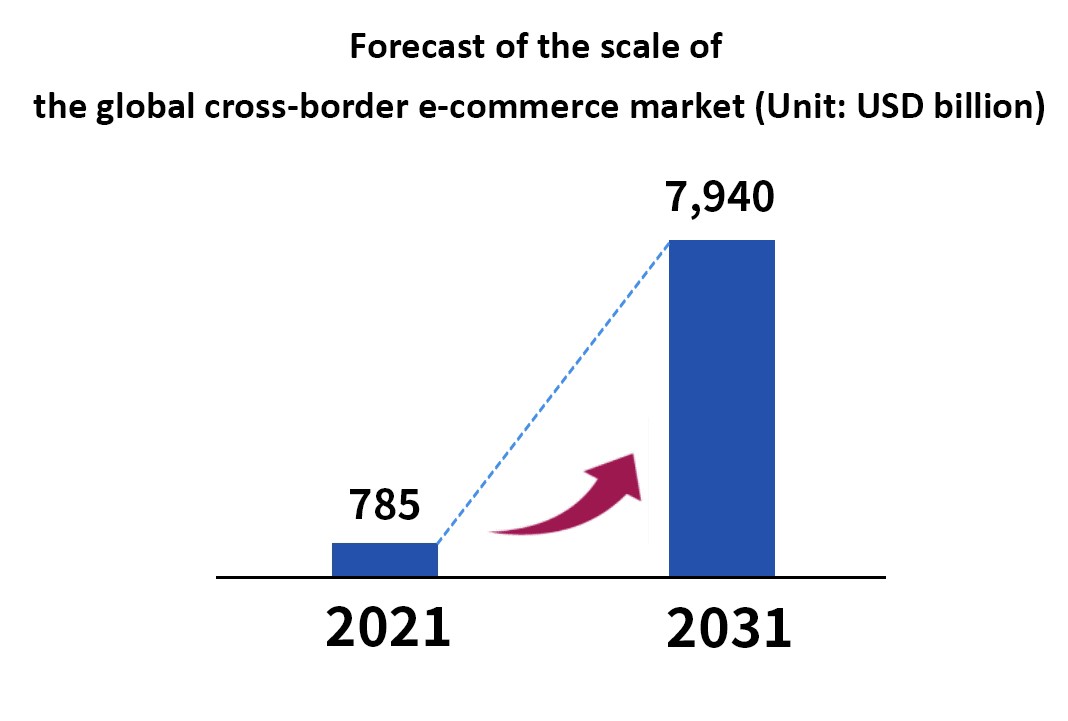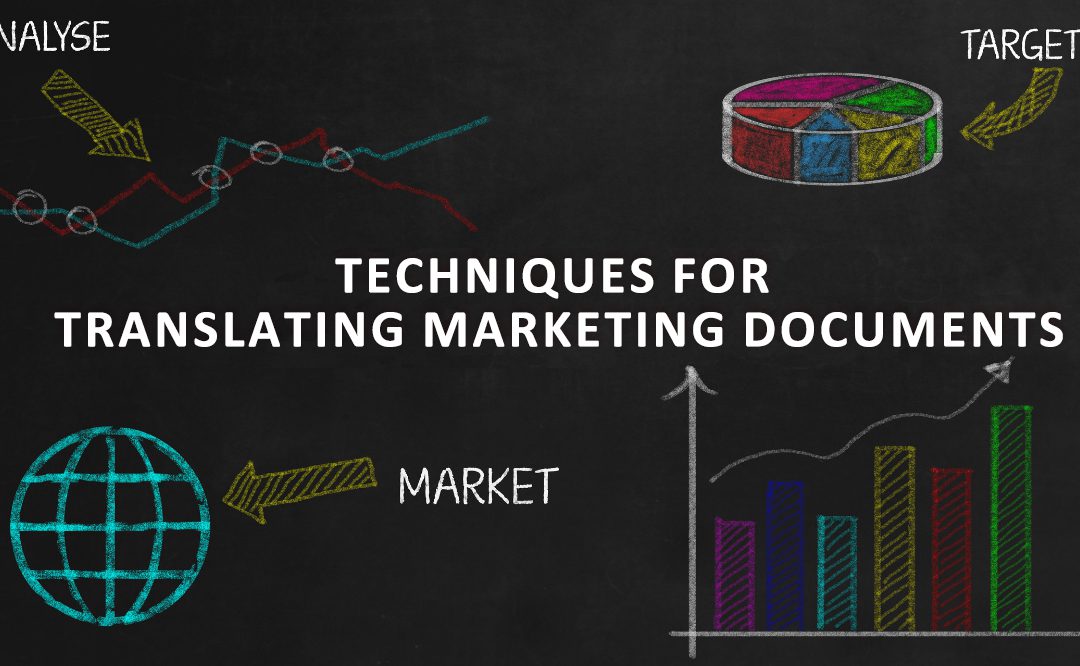Hello, everyone. When a company is developing foreign markets, it is only a matter of time before the company needs to translate its marketing materials and documents into local languages. Those include commercial advertisements, street advertisements, leaflets, posters, manuals, presentations, etc. Also, consumers go online to check the latest information on services that are provided, so the translation of digital marketing materials, including information on social media platforms and websites, is very important.
Therefore, we will discuss what sort of materials need to be translated and the key points to keep in mind when it comes to foreign marketing.
Important Reasons for Translating Marketing Documents

First, let’s talk about why it is important to translate marketing materials. There are two main reasons.
1.Increased demand for translation due to expansion into international markets
As of 2020, the number of overseas locations of companies had increased two to three times, and the global cross-border e-commerce market had grown rapidly. In 2021, the global cross-border e-commerce market generated US$784.6 billion in revenue, and is expected to reach US$7.9382 trillion by 2031, with the Asian market accounting for the biggest share, which is estimated to be two-fifths of the total market.
In the future, large corporations, small and medium-sized companies and self-employed vendors will all consider expanding into foreign markets as a part of their business development, so the translation quality of marketing materials is an important factor in enabling foreign consumers to learn about the company’s goods and services.

Source: Yahoo Finance
2.Increased demand for translation due to changes in marketing practices
Another important reason is changes in today’s marketing practices. At present, more than 90% of companies have consumer-oriented websites, and 40% of them promote their products and recruit people on social media. In particular, the use of social media by companies is increasing year after year, and their interactions with consumers have shifted to almost exclusively being online.
Social media is a medium that emphasizes immediacy. In foreign marketing, if you can prepare localized social media posts and content specific to foreign markets as soon as possible, you will have the chance to attract more customers. For example, it’s not easy to browse the Chinese version of official social media accounts from outside of China; even if the company has official social media accounts in other languages, it will cause dissatisfaction among foreign consumers if the translation of the latest information is delayed by a week.

Marketing materials that must be translated
Below is a summary of the materials that must be translated based on our experience as a translation company.
(1) Company overview and product features
Websites, promotional materials and brochures, product catalogs, handbooks, manuals, and all sorts of reports on financial information, investor relations, etc.
(2) Create interactions with consumers
Social media accounts, blog pages, online advertisements, street advertisements, leaflets, posters, promotional articles for the internet and magazines.
(3) For internal use
Messages from directors, handbooks for internal use, training materials, etc.

3 Key Points to Keep in Mind When Translating Marketing Materials
As mentioned above, there are all sorts of materials that must be translated for marketing purposes, and while having the correct translation is important in practice, there is something even more important than that: ensuring the translation is appropriate for the target country or region (translation that is persuasive to the target group).
In general, the most important aspect of translation is to translate original text correctly. But, when translating marketing materials, it is important to be “creative” and translate in a way that is the most acceptable to users in the target region.
The slogan for the iPhone 13 Pro is the best example to demonstrate this point. Even though the Chinese language is used in Mainland China, Taiwan and Hong Kong, expressions in those three regions are very different. We can see that Apple created the most effective way to express itself by taking into consideration the history, culture, values and customs of the target region.
| Slogan for the iPhone 13 Pro in English | Chinese in Mainland China |
Chinese in Taiwan | Chinese in Hong Kong |
| Oh. So. Pro. | 强得很 | 就。很。Pro | 非常。Pro。 |
| Your new superpower. | 解锁超能力 | 超能力,超有實力 | 超能,超多可能 |
When translating marketing materials, there is a risk that the appeal of the product and the relevant content may not be adequately conveyed to the consumer if a direct translation of the original text, similar to a machine translation, is used. The quality of the translation may lead to a decrease in the consumers’ trust in a company, so companies need to be particularly careful.
If you want to market your company in the most effective way to a specific target region, knowing your company’s businesses well and having the content translated by native speakers in that region is key to your company’s success.
So what should you keep in mind when translating marketing materials?
The following are some of the key points to pay attention to during the translation process. Even if the materials translated are in-house, it would be a good idea make sure the in-house translators refer to these points.
1. Do not rely heavily on machine translation
As mentioned before, when it comes to the translation of marketing materials, it’s impossible to convey their appeal if they are translated directly as if they are ordinary documents. Therefore, it is important not to rely too heavily on machine translation.
Machine translation is not good at dealing with subtle nuances and buzzwords, which are important in marketing materials, and texts produced via machine translation tend to look like articles that are easily accessed by translation websites, i.e., articles that read like they came straight out of a textbook. However, it’s hard for that kind of translation to fully convey the appeal of a company’s services and products.
In addition, machine translation’s ability in handling proper nouns is insufficient, which can lead to serious misunderstandings if a text produced by machine translation is used without being reviewed by a native speaker first.
The translation should be done by someone who can clearly identify the key points of the marketing material, its intended purpose, and the people for which it is intended. Important materials should be translated by translators experienced in the industry.
2. Use the glossary and the style guide

When translating marketing materials, it is important to use glossaries and style guides to enhance and maintain consistency in the quality of translation, particularly in terms of important terminology and context.
・Glossary: A list of commonly used keywords, proper nouns, and words that require unique translation methods.
・Style guide: A guide for setting company-wide standards for punctuation, sentence endings, typefaces, and fonts.
Whether you are commissioning a translation company to do the translation or you’re having the translation done in-house, you can maintain the quality of the translations for a long period of time by providing glossaries and style guides, and you will be less likely to make mistakes when translating large amounts of material.
Below, the PTSGI blog talks about ways to create glossaries and style guides. Be sure to check it out.
Related article: Translation glossary – Determinant of translation quality
3. Be sure to use the right language for different places
The third point is that even if the same language is used in different regions, different texts must be produced for different target regions. For example, there are differences between the Spanish and Portuguese used in Europe and the Spanish and Portuguese used in Central and South America, and, as mentioned before, there are differences between the Chinese used in Mainland China, Hong Kong and Taiwan. Even if the same language is used in different regions, there are still significant differences in vocabulary and expressions.
If you are not aware of these differences, and simply have the marketing materials used in China reused verbatim in Taiwan, you may lose the favor and trust of Taiwanese customers and consumers, and risk losing business opportunities.
To effectively promote Mainland China-specific and Taiwan-specific marketing, it is recommended that you at least commission a professional translator who is proficient in Chinese to translate important marketing materials, press releases and advertisements.
To have marketing materials translated, leave it to PTSGI
When translating marketing materials, it is important not to rely solely on direct translation, but also to take into account the customs, culture and history of the target region in order to fully convey the charm of your company’s products and services.

PTSGI is the biggest translation company in Asia, supporting over 140 languages and having over 13,060 contracted translators. No matter which national or regional market you are trying to develop, we can find a professional translator for you at anytime.
What’s more, not only is our consultation service available 24 hours a day, but we provide translation support on everything from professional documents to websites, handbooks, and almost anything else you might need when expanding into a foreign market. In terms of quality, we have ISO 17100 and ISO 19001 certifications, and we have some of the biggest companies in the world as our clients, including TSMC and Toyota.
Currently, PTSGI is offering a free trial of 300 words. So if you need marketing materials translated, don’t hesitate to contact us. We are eager to be of service!

